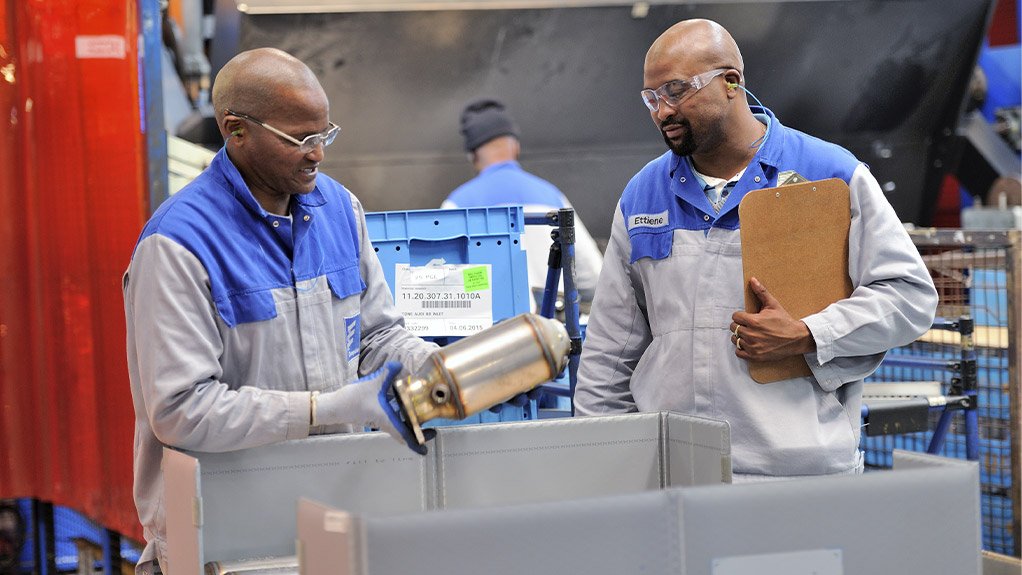While there is significant alignment in the South African automotive industry from original equipment manufacturers, importers, exporters and unions around the comprehensive Automotive Masterplan 2035, global demand and technology changes will inevitably impact on the local industry, says National Association of Automotive Component and Allied Manufacturers (NAACAM) president and KAP Automotive CEO Ugo Frigerio.
The South African automotive industry exports about 60% of its produce and any negative impacts on gross domestic product of countries the industry exports to will result in softer demand. Demand for automotive components will mostly track vehicle sales and weaker demand in key markets will negatively affect the whole value chain.
“Even prior to the outbreak of the COVID-19 virus, vehicle sales have trended lower in China, Europe, Japan and South Africa, while sales were moderate in the Americas. Reactions to the potential impact of the virus will likely reduce demand worldwide. This will impact on exports while a lack of growth is reducing local vehicles sales and impacting on the local automotive industry.”
South Africa should aim to elevate its competitiveness and ensure that support is available to enable companies in the industry to remain at the forefront of automotive technology and trends, advises Frigerio.
The competitiveness of manufacturing operations is a complex issue and may be influenced by supply chain considerations or efficiencies, as well as ex-factory costs.
However, progressively achieving the local industry’s growth plan is hindered by a lack of stable power supply and increasing electricity costs without a proportional increase in reliability of supply.
Therefore, the ability to source alternative power is critical and several South African automotive manufacturing companies have initiated gas and solar power pilot projects, adds Frigerio.
“Legislation needs to be accommodating to enable the industry to secure power supply to ensure continuous production, alleviate some of the challenges of Eskom and potentially help to ameliorate input cost growth.”
While many factors determine competitiveness in the automotive industry, quality, delivery and cost are the most important metrics. Costs relate to things within and beyond the control of a company.
South African automotive companies struggle to compete directly with many countries’ industries in terms of volumes and any negative impact on its competitiveness is difficult to overcome.
This is why benchmarking is important, as it enables the industry to compare its efficiencies against manufacturers worldwide. These pressures also compel companies to have in place skills development programmes, he adds.
Frigerio says there is significant upskilling and reskilling in the industry, although the pace of developing new skills is hampered by the poor schooling levels of young adults, which have to be overcome through basic bridging courses.
“The shortage of skills in the industry is expected to be exacerbated as mobility changes worldwide, which includes cars becoming less like a commodity and more product-like, with additional sophisticated and connected systems. This may challenge the industry to catch up with the requirements of global trends,” says Frigerio.
From NAACAM’s point of view, each component manufacturer, depending on the products it produces, provides a certain amount of in-house training and external training with support from sectoral education authorities and education fund schemes.
More education programmes appropriate to where the industry is heading should be encouraged, but funding is a challenge, he emphasises.
The capabilities of automotive component industry workers tie into its competitiveness, and greater levels of mechanical, technical and digital competencies among workers of all levels will support more stable production and improve the ability of the industry to upskill and reskill workers as demand dictates.
Mobility Changes
Similar to the nascent automotive and component manufacturing industries in Africa, the local industry must be careful of the significant transformation of human mobility predicted. Software, as an example, will become more relevant and important to the industry.
It is not inconceivable that automotive manufacturers will team up with software companies to produce cars that serve in connected environments, says Frigerio.
The changes can dramatically boost the demands on component manufacturers, but they can also present a risk as original equipment manufacturers may disappear as the commodity value of vehicles fade when mobility can be accessed as a service.
While the change will be gradual, and support for existing and new models will lag behind the introduction of new forms of mobility and propulsion, the South African automotive components industry cannot afford to be behind the curve of technological change, he adds.
“Ten to twenty years from now, ownership of a commuter vehicle may not be a good investment, if access to mobility services is readily available. However, this does not mean there will be fewer cars, as car volumes are expected to grow steadily, and more stringent maintenance standards for public transport, including ride sharing and eventually autonomous vehicles, should generate constant demand for components.”
The industry cannot predict which direction mobility will take, and is modelling several scenarios to understand the impact of potential changes and develop strategies to mitigate negative impacts and exploit opportunities.
New considerations are also coming to the fore, such as the cybersecurity of connected vehicles and passenger safety systems as the shape of the cockpit changes and how readily a vehicle and its components can be recycled.
“Automotive manufacturers are forging alliances, even with competitors inside and outside the industry to absorb and spread the costs of transitioning their businesses. This migration of the entire industry will, by necessity, form part of the continuous improvement in our industry,” he concludes.
Story highlights:
* Mobility changes can boost the demands on component manufacturers and reinforce the focus on competitiveness, quality and managing input costs.
* Greater levels of mechanical, technical and digital competencies among all automotive workers will support stable production and allow the industry to upskill and reskill workers as demand dictates.
Edited by: Zandile Mavuso
Creamer Media Senior Deputy Editor: Features
EMAIL THIS ARTICLE SAVE THIS ARTICLE
ARTICLE ENQUIRY
To subscribe email subscriptions@creamermedia.co.za or click here
To advertise email advertising@creamermedia.co.za or click here













